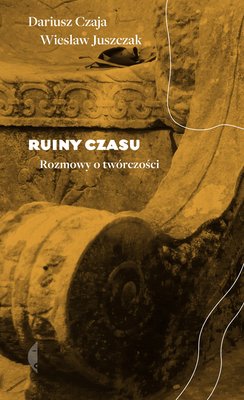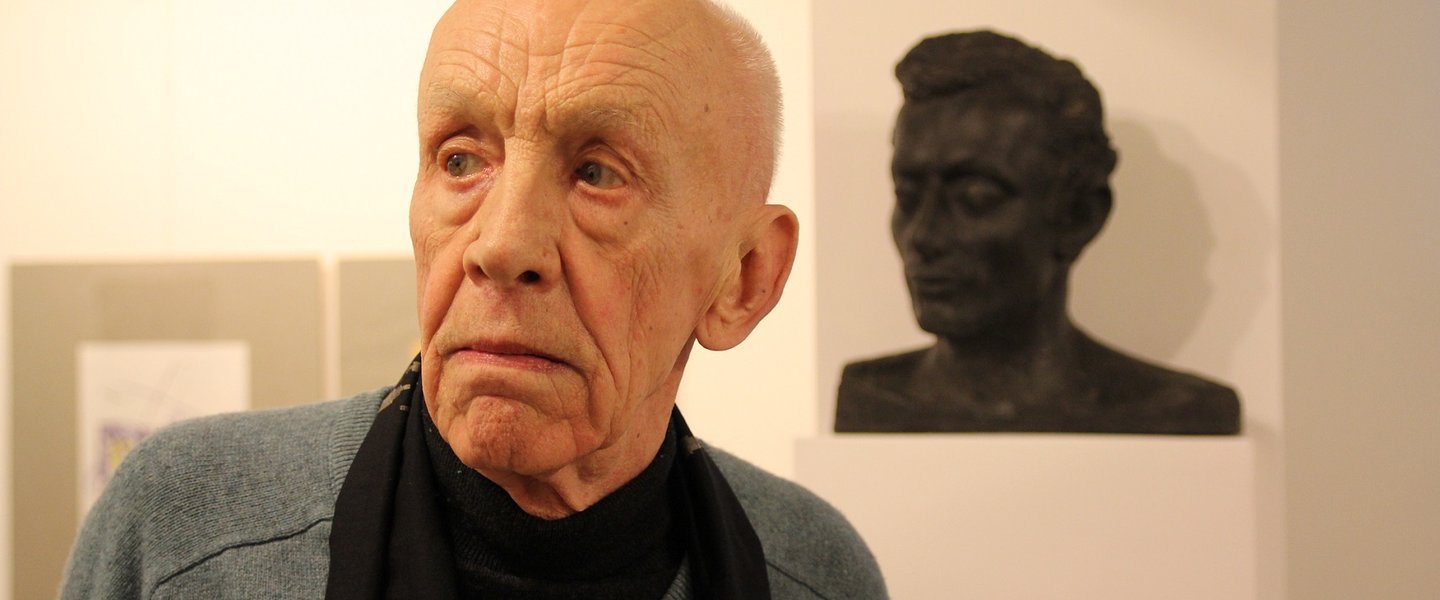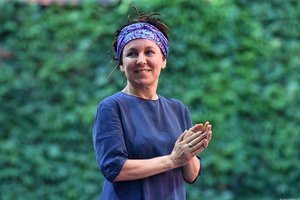Tradition guides thinking
My lengthy experience in various fields of culture and art prove that there is a realm that is hidden to our mind, although sometimes it is available to our emotions. Pretending that the nonmaterial world does not exist is simply irrational - Prof. Wiesław Juszczak, philosopher of art, tells “Rzeczpospolita” in an interview.
“Rzeczpospolita”: Are humanists destined for extinction?
Prof. Wiesław Juszczak: I don’t believe so. There are many talented young people with achievements, not to mention all the older ones. Which is why I don’t believe that humanity is really in demise.
How then should we treat Japan’s decision to eliminate humanities studies in the country?
It is strange that the first sign comes from a country for which fidelity to cultural tradition is the first principle of existence.
Can one not oppose tradition?
No, you can’t. Tradition provides the deepest roots of culture. Obviously, tradition develops through the creation of conventions, but its internal development does not go beyond certain limits. For example, if we look at the country you referred to, Japan, in the days of silent film, you see movies developing as if they were an extension of ancient theatrical conventions. Still, it was this way everywhere. At the time, Akira Kurosawa, the best-known Japanese director in Europe, was criticised in his homeland for infringing on the conventions of ancient Japanese theatre. The director that the Japanese appreciated most was Yasujiro Ozu, who long remained unknown in Europe. Although he only lived for 60 years, he made 59 films, and most of them still in the days of silent film. Later, he managed to cross the sound barrier, which proved to be the downfall of many directors and actors. Moreover, he introduced colour in these final films. He told nothing but contemporary stories about the life of average, ordinary people, yet in some films, such as my favourite, The End of Summer (Kohayagawa-ke no aki), he cast a great kabuki actor, quite advanced in years at the time, in some of the leading roles. The actor actually performed just like the others did, but he introduced something from traditional theatre, one of Japan’s three strict theatre conventions. And, it is worth noting that he was buried in a Shinto shrine in recognition of his art, as a representative of the Shinto religion.
But what will happen to his successors? What will be the aftermath of the elimination of humanities studies?
Disorder, because moving away from tradition demolishes the order of thinking.
Where did this “disorder” begin?
With making things contemporary. Let me mention the last opera I saw: Giacomo Puccini’s Manon Lescaut at Warsaw’s Grand Theatre. In the libretto, the plot takes place at a stagecoach station towards the end of the 18th century; a brother sees off the heroine, who is about to join a monastic order. Now, however, the plot takes place at a train station. Every now and then, there’s a train crossing the stage, parallel to the edge. There are platforms with members of the choir running with suitcases on wheels on both sides of the tracks, drowning out the music. The heroine of the opera enters in a red costume reaching mid-calf, made probably from plastic, in a kind of a hat. A rectangular frame, made of fluorescent bulbs, with her inside, and with the name “Manon”, written above her, descending from the air. A commercial trick and nothing more. None of this makes sense. And I don’t know what happens later, because I left.
Does that often happen to you?
I stopped going to the opera when directors started messing it up, and it is hard to anticipate what I am going to find there. I’ve had a number of such cases in recent years where you couldn’t simply sit down and watch what was happening on the stage. Not to mention that the music was actually in the background, providing only a pretext to the staging. I often buy or receive opera records as presents; they are recordings not only of music, but they also contain video. I recently received two that were actually unwatchable. A disaster.
Why so?
For example, in my beloved Norma by Bellini, druids are dressed in contemporary hunting outfits and are carrying shotguns. Druids! Celtic priests celebrating religious rituals and ceremonies are carrying weapons. Horrific! And high priestesses, members of Norma’s retinue, are no more than a collection of habits, and you cannot even associate them with the priestesses from the libretto. Moreover, they have collars that, as I see it, make singing difficult, under their chins. Just an invention of the director and dramaturgist.
Yet modernised interpretations have plenty of champions, when you look at the booked-out opera halls…
Only that these audiences have no idea what music is. People go to the opera because they’re supposed to, or just to socialise. Take Edita Gruberová, a great singer who just turned 70 and is still alive and well. She says that lately she has only done concert performances of operas because she is afraid of directors. I have heard her in Warsaw twice, singing Donizetti’s rare opera Roberto Devereux, and recently also Norma. But the orchestra was placed on the stage and so was the choir, and the singers stood at their pulpits in the proscenium. Only it was not an opera performance but a concert.
Is it better that way?
Very much so, at least for me. The operatic and classical ballet conventions are some of the few Europe developed, so destroying them just for the sake of destruction is nonsensical and harmful.
Can these conventions not be modified?
One shouldn’t, as this clashes with the original assumptions, with the music. The conventions of these on-stage music genres have had their rules in place since the 17th century. Movement developed on-stage slowly, beginning with the Baroque convention aimed at abstraction, which had nothing of what you could call realism. Various currents that transformed conventions emerged only later. But they didn’t break them. If we consider Monteverdi’s L’Orfeo written in 1607 and later Puccini’s Tosca written in 1899, you can see a huge change between the two, yet everything remained within the operatic convention. This means that the artists perhaps perform differently when they sing Tosca and L’Orfeo. Nearly 300 years makes a difference. From today’s point of view, L’Orfeo, based on a myth and considered the beginning of opera, is less realistic than Tosca, which is actually quite a realistic representation. Various operatic avant-gardes cropped up in the first decades of the 20th century. They broke the musical convention, all right, but it was only a convention. Changes in the score enforced a different way of directing. But there were no changes as severe as those that have appeared in recent decades.
Why are these changes appearing now?
Hard to say. But this is in opposition to tradition.
Can you also see this in other artistic disciplines?
Certainly, yes. When it comes to visual arts, I can hardly stand all these performances and the like that replace sculpture and painting. As far as theatre goes, I’ve seen a production of one of the greatest Greek tragedies, Euripides’ The Bacchae, that was transformed entirely into contemporary times. And it didn’t make any sense at all. The tragedy begins with a monologue by Dionysius, who is dressed in a creased white suit. In an unbuttoned jacket with his chest bare. He soliloquises while standing with his back to the audience. Moreover, he doesn’t produce the text in a communicative manner. When somebody asked the director why this was the case, he answered that the actor was impersonating Dionysius and was learning to speak. That’s rubbish. A god doesn’t have to learn to speak; he spoke first, before anyone else.
Early in the 1960s, you saw sculptures from the Parthenon in London for the first time. But you only went to Greece many years later, in 1995. Why only then?
After a year’s scholarship to London in the 1960s, it didn’t occur to me to go abroad again, because that door was slammed shut in a way, and I didn’t want to try to cross borders anymore. It wasn’t as simple as it is today. I was under the specific spell of a week’s solitary stay in the city of Eleusis, known for the mysteries celebrated in ancient times, and connected to the cult of Demeter, her daughter Persephone, and Dionysius. I wrote one of my crucial books, Realność bogów (‘The Reality of the Gods’) after my stay in Greece. I also included my Greek experience in Dziennik apokryficzny (‘An Apocryphal Diary’), an essay on my contact with Greece from the most secret, clandestine aspect. To this day, no one knows what the Eleusinian mysteries were like, although many have tried to penetrate their mystery.
You have tutored dozens of doctoral students, and your lectures are legendary to this day. Where did this fame come from?
Perhaps it was because I only selected subjects according to my own interests. When I began working at the University of Warsaw, I could do whatever I wanted, I could deliver monographic lectures on subjects I invented myself. These included the theory of ornamentation, Plato’s thought about art, as well as foreign cinema, Japanese included.
And yet people say that your contact with Polish cinema ended in the 1960s because you had already seen everything that was important. Was that the case?
Polish film spoke of the things happening around us. For that reason, I didn’t have to go to the cinema to see the same thing once again – both in a version accepting reality and in one opposing it. I got tired of once again watching a world that I knew very well, however alien I found it. Much more so than the one the great foreign directors were telling us about, beginning with Bergman, who was most important for me, through Federico Fellini to Michelangelo Antonioni. And there was also Franco Zeffirelli, who made a great film about St Francis.
Were Polish artists less sensitive?
No, there were great ones as well, Wojciech Jerzy Hass, for example. And Andrzej Wajda, whose films I made an exception for and have watched regularly. But what captivated me most about Wajda were his films that make reference to literature, which you could call romantic, also including those based on the works of Jarosław Iwaszkiewicz, the author of The Birch Wood and The Maids of Wilko. And still, Wajda directed a truly great film, Pilate & Others, inspired by one of the plot lines in Bulgakov’s Master & Margarita, with Jerzy Kreczmar’s last great role as Pilate. A great cast, fantastic ideas, and indeed with a certain modernisation of the story. Enough to have Mt Golgotha placed next to a Berlin motorway. But this did not intrude on things in any way, because the tension, the way the actors performed, and the treatment of the entire scene added to, rather than subtracted from, the whole, by standing in contrast against the drama taking place in the foreground. Only great minds know how to do that.
Your book Postimpresjoniści (‘Post-Impresionists’) enjoyed some rather unexpected success in the 1970s, and was reprinted a number of times. But you did not follow the path that typically comes with such success…
In a sense, I followed it for some time. I wrote the book you mentioned by coincidence while working on my doctorate on Witold Wojtkiewicz. I was working at the State Publishing Institute (PIW), where I met a woman from “Filipinka”, a popular biweekly for young girls. She talked me into writing a series of articles on postimpressionists for her magazine. This is how that book came to be, which I nonetheless rewrote from scratch later on. It was a popular introduction to a popular movement in painting. Evidently, people liked it.
Have you often accommodated the expectations of people commissioning books from you?
It has happened. One of these commissions was a book about Jan Stanisławski, a painter and one of the main representatives of Polish modernism. He was a figure from the period I was interested in, the 19th and 20th centuries. Then came an unexpected commission for a book from Mrs Maria Weissowa, the widow of the painter Wojciech Weiss. Still, I didn’t write about his entire life, because it was beyond the scope of my research. I preferred to deal with what I found interesting. This still meant constantly discovering unresolved problems.
In your case, such choices have far-reaching consequences, for example, the persistent avoidance of the immediate, of the pressure of the contemporary.
That’s right. I fight against the immediate. Why should one focus on what is transitory?
You frequently use the term mystical both in interviews and in your texts. Is it an important term?
Very much so. It helps to stand back and take a look at our overwhelming everyday lives, at current developments in the world, at our interpersonal relationships, and so forth. This is a realm that belongs to the most primeval reality —without choosing my words too carefully—religion. I’ve always been interested in experiences that not only go beyond the everyday, but that also provide a more profound perspective on what happens in life. That is why, in fact from the time that) I was writing a book on Virginia Woolf, A Curtain with Birds of Paradise and my research on William Blake, of course, I began to move towards the history of religion, a subject to which I have devoted more or less half my life. One that lets me make continuous queries in this or that manner in various fields of art, and especially in the field that is closest to me, music.
Do people still need that ineffable realm of life that is difficult to describe?
I certainly do. This results in a slightly different attitude to the world.
What does this difference consist in?
The realm we call mysticism complements our experience of the world. The only way we can observe it otherwise is in geological terms. The many years of my experience with various realms of culture and art show that there is a realm that is hidden from our reason, although it is sometimes available to our emotions. Let Werner Herzog’s documentary Cave of Forgotten Dreams be an example, about 50,000-year-old rock paintings, the oldest such paintings discovered in the world. They look very fresh, for example, the horse looks as if it were painted yesterday. There are mammoths, horses, bison, rhinoceroses – many of them as if caught in motion. We are dealing with a world of exceptional mystery, the question of how humans living at such a low level of civilisation knew how to use art to reach for the unexplainable. Herzog portrays this perfectly, and he considers the people who made these paintings to be architects of great cave churches, because this is how he treats them. They weren’t for habitation. These people construed the world differently, more profoundly than we do. Herzog doesn’t consider it expedient or true to call humans during the Palaeolithic and Neolithic eras homo sapiens. He would rather call them homo spiritualis. And this is a trace of the spirit in humans that is capable of creating art that is completely alive and, moreover, thoroughly inspiring with emotions. A mystical experience. William Blake, who I have dealt with a lot in my life, was undoubtedly also a mystic. This is also a question of an unfolding vision that does not fit into any rational conventions. For the world is structured in such a way that it is more than just matter. Reducing it to only the material aspect is absurd. Pretending that the nonmaterial world doesn’t exist is simply irrational. And not the opposite, as many believe.
Source: “Rzeczpospolita”


Ruiny czasu ('Ruins of Time') has just been published by Wydawnictwo Czarne. It is an extensive interview with Professor Wiesław Juszczak by Dariusz Czaja, discussing film, music, ballet, Greece, and art.
This is how Czaja refers to the extensive and multifaceted nature of Juszczak’s interests in the introduction: “a true polymath, as a man versed in various fields of knowledge was called in the good old days. Nominally, an art historian, yet in both practice and in his investigative passions, one who has truly gone beyond the realm of what has routinely been the interest of his discipline, which is certainly not small by any means. When necessary, he may also be a philosopher, a philologist, an expert in all things ancient, an anthropologist, and an authority on literature and film – to limit ourselves only to the disciplines he has written about. Indeed, Juszczak is also a lover and connoisseur of the ballet, opera, and Japanese film (I’m not making any of this up!), Mahabharata, and, on top of that, he is also a translator of Karen Blixen, T.S. Eliot and William Blake. I’m sure I missed something. I apologise.”
Moreover: “the anachronism of his private and academic approach. Juszczak is clearly not ‘trendy’, he doesn’t follow the spirit of the times, nor does he race against it. There is something symptomatic in this attitude of turning away consciously from the contemporary, something that not only justifies but also adds credence to his cognitive choices. Indeed, in his writing, Juszczak doesn’t chase novelties, nor does he keep his hand maniacally on the pulse of everyday events. He is also impervious to seasonal intellectual fascinations and to other fashionable nonsense. He looks far more often to the past, to find inspiration for his interpretive concepts there.”
04.07.2017







